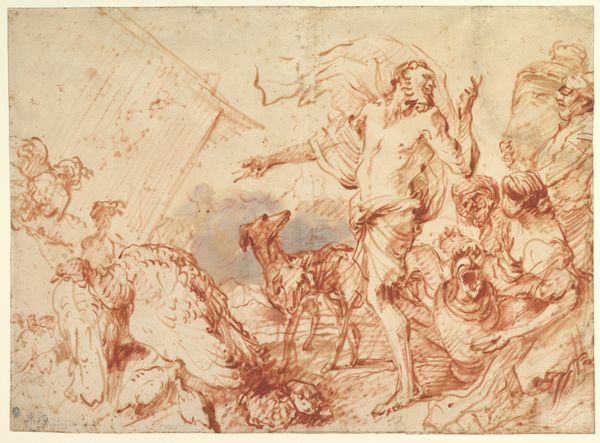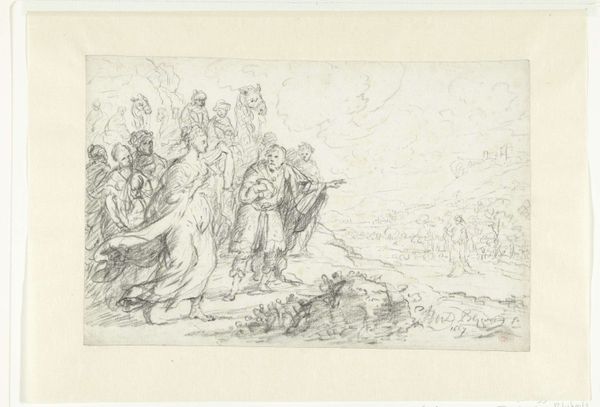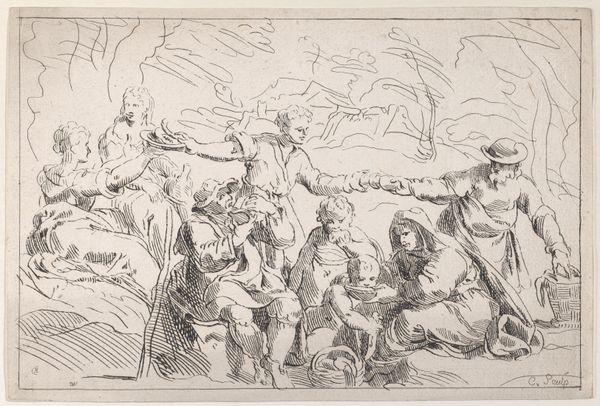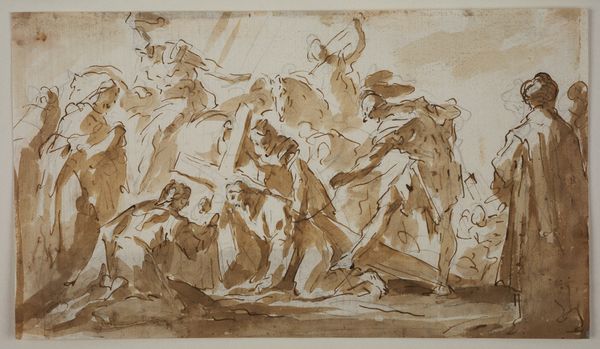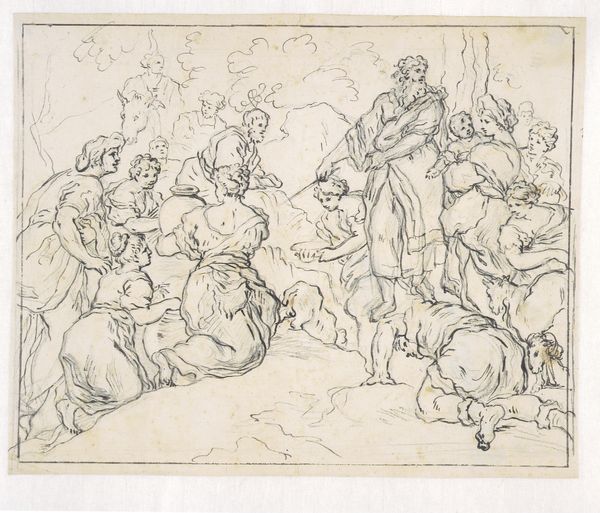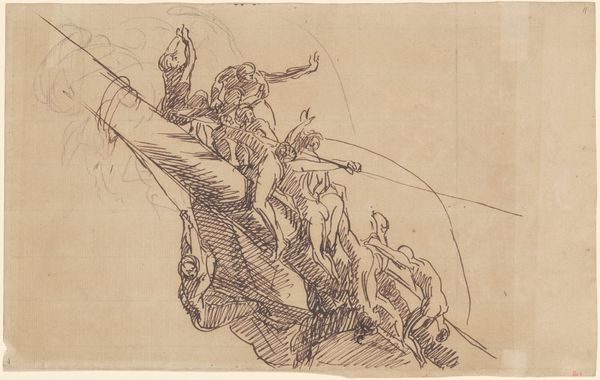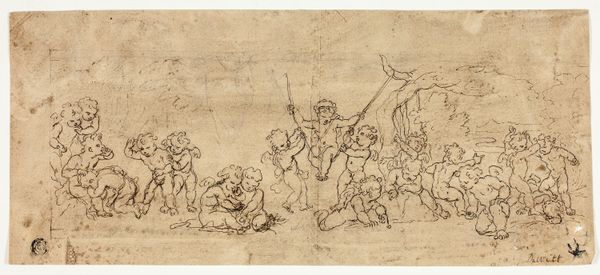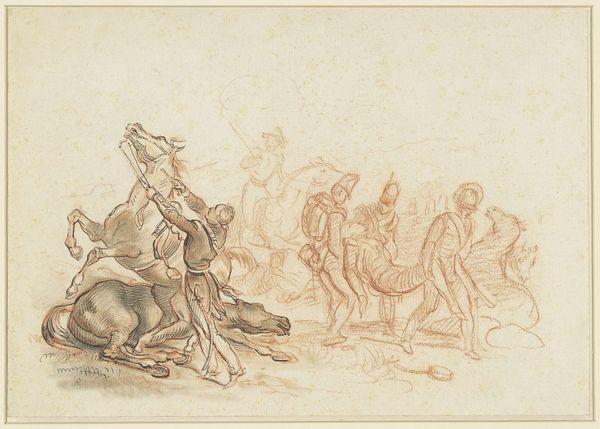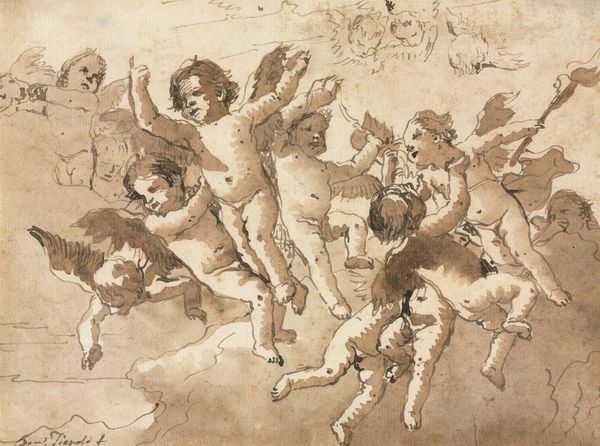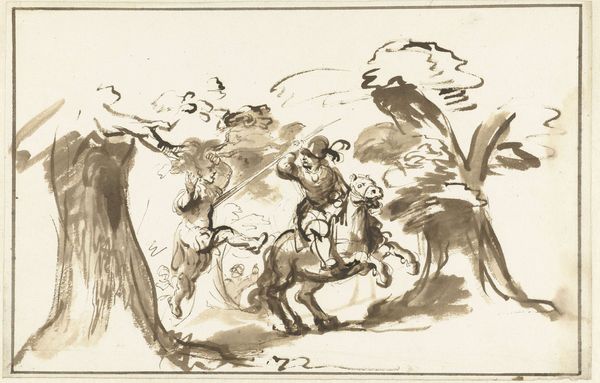
drawing, ink
#
drawing
#
narrative-art
#
baroque
#
figuration
#
ink
Dimensions: sheet: 15.2 × 26 cm (6 × 10 1/4 in.)
Copyright: National Gallery of Art: CC0 1.0
Editor: So, here we have "The Return of the Spies from the Promised Land," an ink drawing by Pier Francesco Mola, circa 1666. There’s a real sense of movement, especially with those massive grapes and the figures clustered around. What is your take on it? Curator: It's intriguing to consider Mola’s drawing within the framework of colonialism and the power dynamics inherent in narratives of exploration and conquest. The spies returning with the bounty of the land can be viewed through a lens of appropriation and control. The weight of those grapes, carried on their shoulders, becomes a symbol of the burden of exploitation, doesn't it? Editor: I hadn't considered the "burden" aspect, I only saw a demonstration of prosperity. It sounds like you’re positioning the spies as maybe...complicit in something larger than themselves? Curator: Precisely. These spies are not simply bringing back fruit; they're participants in a process that dispossesses and exploits the indigenous inhabitants of the Promised Land. The lushness of the grapes becomes almost grotesque when you consider what their acquisition truly means. What do you make of the huddled figures on the right, the observers? Editor: They seem… passive? Almost like witnesses to an event unfolding. Perhaps they represent the collective consciousness, maybe burdened by the weight you describe? Curator: I think that's astute. Consider their gazes: some seem curious, others perhaps apprehensive. They represent the societal implications and moral questions arising from expansion and resource extraction. In light of today's conversations, do we see an uneasy echo of colonial practices, disguised in history? Editor: Definitely. It recontextualizes the way I understood the image at first glance. I came into this seeing a historical record but, as you put it, the visual impact has implications far beyond its time. Curator: That's right. Art constantly engages in this dialectic, revealing history’s layered dimensions through visual story-telling.
Comments
No comments
Be the first to comment and join the conversation on the ultimate creative platform.

